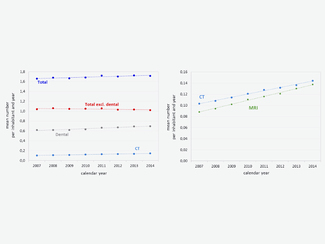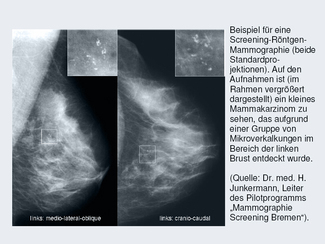-
Topics
subnavigation
Topics
Electromagnetic fields
- What are electromagnetic fields?
- Static and low-frequency fields
- Radiation protection relating to the expansion of the national grid
- High-frequency fields
- Radiation protection in mobile communication
Optical radiation
Ionising radiation
- What is ionising radiation?
- Radioactivity in the environment
- Applications in medicine
- Applications in daily life and in technology
- Effects
- What are the effects of radiation?
- Effects of selected radioactive materials
- Consequences of a radiation accident
- Cancer and leukaemia
- Genetic radiation effects
- Individual radiosensitivity
- Epidemiology of radiation-induced diseases
- Ionising radiation: positive effects?
- Risk estimation and assessment
- Radiation protection
- Nuclear accident management
- Service offers
-
The BfS
subnavigation
The BfS
- About us
- Science and research
- Laws and regulations
- BfS Topics in the Bundestag
- Links
X-rays
In 1895 Wilhelm Conrad Roentgen discovered a new kind of radiation that was named after him later on (Roentgen rays, also referred to as X-rays in many languages). Roentgen’s epoch-making discovery was enthusiastically celebrated. X-rays permitted insights into the human body without surgery for the first time ever, thus marking a dramatic progress in medical diagnostics. Nowadays X-ray diagnostics is a widespread and frequently used imaging procedure.






